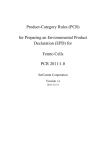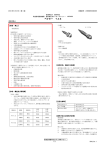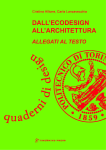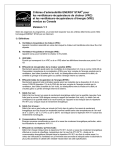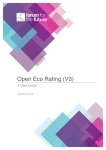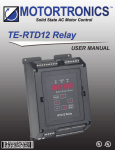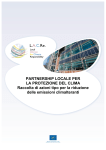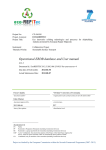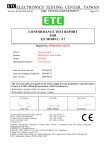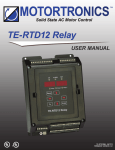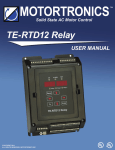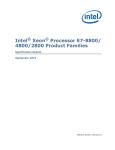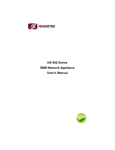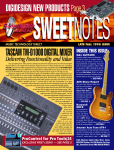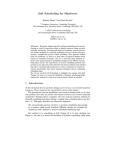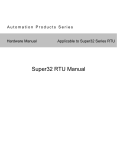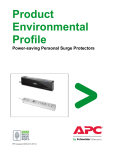Download Home Gateways
Transcript
Product-Category Rules (PCR) for preparing an environmental product declaration (EPD) for Home Gateways PCR 2010:1.0 ZyXEL Communications Corporation Version 1.0 2010-09-28 This PCR complies with the requirements of the International EPD®SYSTEM as well as the guidance of the Environment and Development Foundation (www.edf.org.tw). Table of Contents 1. General information 2. Company and product description 2.1 Product function 2.2 Product components 2.3 Product technical description 3. List of materials and chemical substances 4. Declared unit 5. System boundaries 5.1. Specifications for different boundary settings 6. Cut-off rules 7. Allocation rules 8. Units 9. Calculation rules and data quality requirements 10. Parameters to be declared in the EPD 11. Recycling information 12. Other environmental information (Optional) 13. Information about the certification 14. References Appendix I Generic data sources to refer to Appendix II Reporting format for the EPD Appendix III Abbreviations 1. General Information This document is to be used as the product category rules (PCR) for Home Gateways. The requirements specified in this PCR are intended to be used for EPDs certified in accordance with ISO 14025 standard. This document shall be valid until September 28, 2015. This PCR was jointly prepared by the ZyXEL Communications Corporation and Integrated Service Technology. Representatives from major Taiwanese manufacturers of similar products and stakeholders were invited by the Taiwan Electrical and Electronic Manufacturers Association (TEEMA) to the open consultation meeting on August 26, 2010, to participate in the discussion and review of this PCR. EDF then reviewed and approved this PCR. For further information and processing of feedback comments concerning this PCR, please contact ZyXEL Communications Corp. - Totel Quality Management Division Mr. Whisky Lin (tel:+886-3-5783942, ext.3102,fax:+886-3-5782439;email: [email protected]) or ZyXEL Communications Corp. - Totel Quality Management Division Mr. Alan Cho (tel:+886-3-5783942, ext.3100,fax: +886-3-5782439;email:[email protected]). 2. Company and product description The EPD shall include information about the manufacturing company/organization. The information may include manufacturing process related information, and environmental related information, such as the environmental management system information. The information may also include special issues which the company/organization would like to emphasize, such as the products meeting certain environmental criteria, or environmental safety and health related information. This PCR covers the Home Gateways and is applicable to communications between businesses and consumers (B to C), as well as business to business (B2B), regarding the full life-cycle of the Home Gateways products. While determining the environmental impacts of the product, the product’s accessories and packaging shall also be included in the scope of the study. 2.1 Product function The following description on the product function of the home gateways adopted the language used in the Home Gateway Technical Requirements: Release 1 developed by the Home Gateway Initiative, EU’s Code of Conduct on Energy Consumption of Broadband Equipment Version 3 (Final), as well as the TR-124 Functional Requirements for Broadband Residential Gateway Devices published by Broadband Forum and technical report published by ZyXEL in the Autumn 2009 issue of the VISION magazine. The term “Home Gateway” denotes both the home gateway and residential gateway products. Home gateways are devices capable of supporting a full suite of voice, data, broadcast video, video on demand and two-way video applications in broadband networks. Home gateways are equipped with the functions of routers and cable/xDSL modems, and can connect more than two different types of network equipment to ensure their inter-connection and multifunction operations. (This Technical Report presents a superset of requirements for broadband Residential Gateway devices that are capable of supporting a full suite of voice, data, broadcast video,video on demand and two-way video applications in broadband networks. A Residential Gateway implementing the general requirements of TR-124 will incorporate at least one embedded WAN interface, routing, bridging, a basic or enhanced firewall, one or multiple LAN interfaces and home networking functionality that can be deployed as a consumer self-installable device. This document specifies a baseline of Residential Gateway device and application functions needed to support service delivery in routed and bridged broadband network architectures.Devices can be specified that will operate on any of the different types of Broadband Forum defined network architectures. This allows service providers to configure a Residential Gateway device supporting specified TR-124 modular requirements locally via TR-064 and Web Graphical User Interface or remotely via TR-069.) The home gateway is the main entrance to the residential home. This advanced electronic device ensures continuity between the home network and the external networking world. With growing demands for networking services the home gateway becomes a central technology of the future. Based on the definition adopted by EU’s Code of Conduct Broadband Equipment V3 Final, home gateway’s architectural concept can be presented in Figure 1 below. COE:Central Office Equipment CPE:Customer Premises Equipment Access line Terminals Modem NT LT HNID IP-network Home Gateway ATA HNID Modem NT LT Modem NT LT Router Printer Server Figure1 Home Gateway’s Architectural Concept This PCR adopted definition of home gateway products in EU’s Code of Conduct Broadband Equipment V3 Final, and define the following five types of home gateway products. Home gateways: z DSL CPEs(ADSL, ADSL2, ADSL2+, VDSL2) z Cable CPEs(DOCSIS2.0 and 3.0) z Optical network termination(ONT)CPEs(PON and PtP) z z Ethernet routers Wimax CPEs Based on the technical report published by ZyXEL in the Autumn 2009 issue of the VISION magazine, the topology of the home gateways can be shown in the Figure 2 below. Figure 2 Network Diagram of Intergrated Home Gateways Based on the TR-124 Functional Requirements for Broadband Residential Gateway Devices published by the Broadband Forum, the home gateways can be divided into three types: (1) Internet information home gateways: Devices connecting residential information network equipment, such as PC, notebook computer, PDA and communication equipment (such as Telephon0065 & IP Phone). This type of home gateway are using in the form of SOHO routers. (2) Entertainment home gateways: Devices connecting home entertainment equipment, such as TV, DVD, and PC. This type of home gateways are usually in the form of STB products. 。 (3) Controller home gateways: Devices controlling the network connection of smart appliances. This type of home gateways are usually in the form of controller home gateways or build-in device inside smart appliances. The home gateway4 is composed of several components, namely a processor plus memory, a WAN interface and several LAN interfaces. Depending on the purpose of a given home gateway different components may be included. The power consumption targets for each type of home gateway are calculated by summing the values of its individual components. The home gateway as a whole has to meet the summed targets for its various modes of operation and activity. Component power consumption values are used to compute the overall home gateway target for a given configuration and mode of operation, but are not themselves normative. The home gateway must meet the power targets for low-power-state and for on-state as defined in section B.1. Depending on the actual state of the individual components, several intermediate power consumption levels for the home gateway exist. More information concerning home gateways may be obtained from: 1 EU Code of Conduct on Energy Consumption of Broadband Equipment: http://re.jrc.ec.europa.eu/energyefficiency/html/standby_initiative.htm 2 Home Gateway Initiative(HGI): http://www.homegatewayinitiative.org/ 3 Digital Living Network Alliance(DLNA):http://www.dlna.org/home 4 Broadband Forum: http://www.broadband-forum.org/ 2.2 Product components The basic components of the Home Gateways shall at least include the following: ─ External Casing ─ Input/Output Interface ─ Mother Board ─ Electronic Components ─ Network Cable, Phone Cable, etc. ─ Packaging Home Gateways may also include the following components/accessories: ─ Antenna ─ External power supply ─ Others: CD/DVD, User manual ─ 2.3 Product technical description The HG architecture is defined as a set of functionalities each of which is a task or a set of tasks to be performed through a software program and/or a hardware device/interface/component. Figure 10 shows the basic set of functional blocks specified by the HGI Release 1. The actual detailed requirements are given in Section 6. The blocks cover a number of functions related to the data plane, the control plane and the management plane. The “Packet Processing” block only acts on the header of IP packets, not the payload. This process is done on the basis of rules and policies contained in the “Quality of Service” and “Security” blocks and is supported by the “Control functions” block for any issue related to addressing and device discovery, as well as management or specific protocols such as SIP and IGMP. The definition of the technical description of home gateways may be expressed in the Figure 3 below: Figure 3 Definition of the Technical Description of Home Gateways Based on the technical report published by ZyXEL in the Autumn 2009 issue of the VISION magazine, the applications of the home gateways can be shown in the Figure 4 below: Figure 4 Application Scenarios for Integrated Home Gateways The product technical description part of the EPD shall at least include the following information: ─ Equipment dimension and weight ─ Connected devices and terminal device ─ Types, number and transmission rate of interfaces. ─ Configuration of equipment and supported protocol ─ Upgradeability of firmware ─ Expected/design product life ─ Power consumption ─ Other supported functions and their definitions, such as firewall, Quality of Service (QoS), network diagnosis, performance monitoring, power management. The technical description for the interfaces shall at least include the following information: (1) WAN interface (2) LAN interface (3) Wired/Wireless LAN interfaces (4) Packet processing (5) Control functions (6) Security (7) QoS: Quality of Service (8) Service Support (9) Management (10) Maintenance (11) Basic system features According to HGI standard, the definiens of network interface technology are the following: - WAN interface: This block describes the physical interface towards the access network and the functionalities related to the WAN interface at layers 1 and 2. Different types of WAN interface are possible, but only one interface is supported at a time. -Wired/Wireless LAN interfaces: This block describes the physical interfaces towards the home network and the related functionalities at layer 1 and 2. A number of different interfaces I1…In, are included. A distinction should be made between the interfaces corresponding to a different LAN technologies (Ethernet, Wi-Fi, USB, …) and service specific interfaces (DECT, FXS port for VoIP, etc.). The LAN technologies are handled at the lower layers, while any service specific functions are described in the service support block. Wi-Fi security (WEP/WPA keys and ACL management) is included here. -Packet processing: This block describes the interconnection functions at layer 2 and/or layer 3 for LAN-WAN, WAN-LAN and LAN-LAN traffic. This means relaying, forwarding, bridging, and also NA(P)T functions if appropriate. The internal connection functions also include the routing of IP-traffic which is meant for, or coming from, the HG itself (local HG traffic). The block also includes the classification and queuing functions related to QoS management and the filtering and encryption functions related to security, as well as specific service-related functions. These tasks are performed only on the basis of information contained on the Ethernet or IP header; this block does not perform any functions involving an analysis of the packet payload. -Control functions: This block consists of the control communication stacks and the control handling. It covers all the functionality needed to control connection addressing and user authentication (via DHCP and/or PPP and signaling protocols) and device discovery inside the home (using DHCP itself or the UPnP protocol). For credentials, it has a relationship with the security block. Security: All functionalities defining policies related to security are contained in this block. It covers protection for the user from unauthorized attacks and intrusions and for the operators from malicious use of the broadband link. Thus, fire-walling rules, authentication handling functions, key management for encryption are all defined here. -QoS: This block implements the policies for QoS management in the Home Gateway and the home network, as well as any mapping between the LAN side and WAN side. It contains the rules to perform classification and queuing, and priority field mappings. -Service support: This block contains a very limited set of application layer related functions, which allows the support of some terminals which lack the necessary capabilities to provide a service. For HGI release 1, this support is limited to voice/communication services; also, in this block some specific features to ensure the support of specific applications and to manage remote access to the home network are considered. -Management: This block consists of the management communication stacks and the management handling. It contains all the functionality needed to manage the HG itself (configuration, firmware upgrade, QoS and security management etc), the HG services (provisioning, troubleshooting) and also devices (device configuration) and services (service configuration) reachable through the HG. The Web interface is also covered by this block, since it is considered as a basic management tool. -Maintenance: This block contains the processes related to performance control and general diagnostics. -Basic system features: This part contains the powering and the processing performance blocks. These two blocks describe the basic hardware HG resources to be shared between the various functional blocks with specific reference to available power (and related issues such as dissipation, reliability etc.) and general capability of the main processor(s) to process traffic flows (both from a data and a control plane point of view) with a defined level of performance. 3. List of materials and chemical substances The contents of the following materials and chemical substances in the product shall be declared: - All materials used in the product with accumulated weight ≥ 99.5% product weight (excluding power supply, accessories and packaging). - All banned substances regulated by legal and customer requirements; - The following materials in the basic components: flame retardants, lead content in solder, lead and flame retardant content in solder masking agent, and substances regulated by RoHS Directive (2002/95/EC)(the latest version). The declaration of halogen-free flame retardants, lead-free solders and no RoHS-regulated substances may only be made when appropriate evidences are available (for example, test reports from accredited laboratories/testing facilities). The following organizations may provide accreditation for testing facilities: Taiwan Accreditation Foundation (TAF), (Asia Pacific Laboratory Accreditation Cooperation (APLAC), International Laboratory Accreditation Cooperation (ILAC) or ILAC Mutual Recognition Arrangement (ILAC MRA). For definitions of testing methodology and confirmations of regulated hazardous substances based on the accredited laboratories’ product testing methods, please refer to IEC 62321 Standard. 4. Declared unit The declared unit is defined as one unit of Home Gateway (including power supply, accessories and packaging), as Home Gateways are marketed and sold in such units. 5. System boundaries The main system boundaries of the product system are presented as follows Figure 5: emission Waste/scrap Emission Trpt Waste/scrap Material production/extra ti Material forming/refining energy Trpt energy auxiliary material Trpt Trpt emission Waste/scrap Manufacturing of main components auxiliary material Manufacturing of other components Material Trpt Assembly of Ethernet Switch energy material Voluntary inclusion Product disposal Trpt auxiliary material Use phase Mandatory inclusion of energy Trpt = transportation emission Waste/scrap Product use Trpt auxiliary energy Manufacturing mandatory inclusion emission energy auxiliary material Disposal Figure 5 System boundary of the main product system As described in Figure 5 above, the life cycle of a Home Gateway covers the product manufacturing, distribution, use, and end of life/waste disposal phases, described as follows. Raw material acquisition phase The LCA shall include information for the following unit processes: ─ Material extraction and manufacturing of main components and other small components; ─ The manufacturing/generation of energy used for raw material production. The inclusion in the LCA the information on the raw material forming and refining, and transportation of raw materials is of the voluntary reporting nature. Manufacturing Phase The LCA shall include information for the following unit processes: ─ Manufacturing of main components; ─ Product assembly; ─ ─ Transportation of main components to assembly plant. Transportation of waste from main components manufacturing process and product assembly process to waste disposal plants; ─ Transportation of main components to product assembly plants. The main components include: external casing, mother board, network core processor, insert-type transformer, insert type electrolyte capacitors, external power supply (if included), network cable, phone cable, optical disc (if included), and solder. The inclusion in the LCA the information on the manufacturing of small components, and their transportation to the assembly plant is of the voluntary reporting nature. Distribution phase The inclusion in the LCA the information on operations of the distributors/retailers and the transportation of product from the distributors/retailers to the users is of the voluntary reporting nature. Use Phase If the product is used at the user-end, the EPD shall declare the electricity consumption during Off State, Low Power State and On State, and the electricity consumption measurement shall be conducted with the test method stipulated for use at the product exported region, such as EN 62301. Based on the Code of Conduct on Energy Consumption of Broadband Equipment Version 3 (Final), the product’s energy consumption states are defined as follows: Off State: The state in which the equipment is not performing any function. This state is entered when the equipment is turned OFF. During the OFF State, the only electricity consumption comes from the external power supply. The product can only leave the OFF state through manual switching to the ON state by the user. Low Power State: The product is idling under this state, with all the components entering their respective low power state. Under this state, the product can not handle high data traffic but is capable of detecting activity. On State: During the On State, all components of the product have entered their respective on state, and two-way data traffic exceeds 25% of the bandwidth (e.g., 25% Tx and 25% Rx). Based on the types of interfaces, the low-power state and on-state of the home gateway can be further defined as: Table 1 Definition of Low-Power State and On-State for the Home Gateways Interface/components Low Power State Central functions (processor and memory routing, firewall, OAM (e.g. TR-069), user interface) Does not include user-end signal processing Processing typical user-end Idling (port connected without user-end signal transmission). Port not connected (or no Ethernet connection), but tested with the Ethernet port connected. Operating (ports connected and processing user-end signals) 4 ports full-load and operating (connection established, conducting max speed signal transmission) line length 5 m. WAN interface LAN Ethernet ports Wi-Fi On State signals Wireless network beacon Wireless network beacon on, but no data traffic. on, with data traffic. As home gateway only serves to transmit data between the home network infrastructure devices, its actual energy consumption will depend on the usage scenarios of the connected equipment and is less relevant to the types of home gateways. In order to provide a uniform basis for calculation of home gateways’ energy consumption during the use phase, the following calculation equation for home gateway use phase annual electricity consumption was developed based on EU’s EuP Directive-Lot 26 Network Standby Losses, Draft Report Task 3, and Japan JEMAI’s PBX PCR. Home gateways usage scenario Divide user’s working behavior into work days and vacation days. Annual work days are: 5-day/week * ×4-week/month * ×12-month/year = 240-day/year; Annual vacation days are: 365-day/year-240-day/year=125-day/year. Assuming a home gateway is connected to main power all year long. During work days, home gateway is operated at 2-hour/day On State, and 22-hour/day Low Power State; during vacation days, the home gateway is 4-hour/day On State, and 20-hour/day Low Power State. Calculation Equation: Total energy consumptio n during use phase(KWh/ yr) [ Energy consumptio n during on state ( W ) × 2 hr/day + Energy consumptio n during low power state ( W ) × 22hr/day] × 240 day/yr 1,000 ( W/kW ) [ Energy consumptio n during on state ( W ) × 4 hr/day + Energy consumptio n during low power state ( W ) × 20hr/day] × 125 day/yr + 1,000 ( W/kW ) = The reporting of information on maintenance during use phase and transportation from product end-of-life to waste disposal is optional. Recycling/end of life The reporting of transportation information from product end-of-life to waste disposal is optional. In order to ensure the comprehensiveness of the LCA study, for B2C products included in the EPD, the inclusion of waste disposal or recycling information after product end-of-life is mandatory, such as recycling and disassembly report and information on recycling channels. If the product recycler’s recycling technology or recycling scenarios may have potential recycling/disposal benefits, they shall be explained in the EPD. 5.1 Specification of different boundary settings Boundary in time The validity period for the LCA results presented in the LCA report shall be defined. Boundary towards nature If the manufacturing processes are located within Taiwan, the waste categories as defined in Taiwan’s Waste Disposal Act shall be adopted. If the processes are located in other countries, equivalent legal requirements shall be considered. The natural boundary of the system shall describe the boundary where the materials and energy resources flow from nature into the system, and where the water and air emissions and waste are released out of the system. Only the waste which is required to be disposed of needs to be considered. If the waste will be treated through water treatment or incineration, these processes need to be included; landfilling process does not need to be included. Boundaries in the life cycle The boundaries in the product life cycle are described in Figure 5. The construction of the site and infrastructure, as well as the production of manufacturing equipment and activities of the workers, does not need to be included. Boundaries towards other technical systems Boundaries towards other technical systems describe the inputs of material and other components towards other systems, as well as outputs of materials towards other systems. For the inputs of recycled materials and energy towards the product manufacturing phase, the transportation between the recycling process and use of recycled materials shall be included in the data set. For the production of recyclable products during the manufacturing phase, the transportation towards the recycling process shall be included. (Note: Further explanations are provided in Section 7 on open-loop recycling) Boundaries regarding geographical coverage The manufacturing phase may cover manufacturing processes located on any sites around the world. For processes located in a specific region, the data used should be representative of the region. The data for the main components shall be the specific regional data for the region where the process takes place (see Section 9). For ease of comparison, no matter where the emissions are generated, the same parameters should be used for life cycle impact assessment (see Section 10). 6. Cut-off rules For any impact category, if the sum of various impacts from a specific process/activity is less than 1% of the impact equivalent in that category, such a process/activity may be neglected during the inventory analysis. Nonetheless, the accumulated impact of neglected process/activity may not exceed 5%; i.e., at least 95% of the product’s life cycle impacts shall be considered. Components/parts and materials omitted from the LCA shall be documented. (Note: This judgment for this “1% Rule” is based on the environment relevance assessment of material input to the system, and does not consider special and exceptional environmental impacts.) 7. Allocation rules The main allocation rules shall be valid for the entire product system. For other secondary processes, other allocation rules may be defined; however, the use of these rules should be justified. Product-specific information should be preferentially collected in order to avoid the need for allocation. While selecting allocation rules, the following principles are recommended. - Multi-output: The allocations are based on the changes in the resource consumption and pollutant emissions (for example, adopted quantity allocation for some main component, or surface allocation for some components), following the changes in the studied system’s output product or function or economical relationship. - Multi-input: The allocation is based on actual relationship. For example, the manufacturing process’s emissions may be affected by the change in waste flow input. - Open loop recycling: For the input of recycled materials or energy during the manufacturing phase of the product system, the transportation between the recycling process and the recycling to material use shall be included in the dataset. For the product which shall be recycled during the manufacturing phase, the transportation towards the recycling process shall be included. Notes: - Major allocation rules shall be valid for the whole product system. But for other secondary processes, other allocation rules may be defined, but the validity of these rules shall be demonstrated. - Product specific information shall be collected preferentially, in order to avoid allocation - Allocation may be avoided through avoidance of dividing processes, for example as described in Section 6.3 of ISO/TR 14049; or through expansion of system boundary (for example as described in Section 6.4), so that the amended system shares the same product exchanges as the original system. 8. Units The base units and derived units of the International System of Units (SI, Système International d'unités) shall be used preferentially. - length unit: m - capacity unit: m3 - area unit: m2 - weight unit: kg If necessary, prefixes may be used before the SI units. 109 = giga, symbol “G” 106 = mega, symbol “M” 103 = kilo, symbol “k” 10-2 = centi, symbol “c” 10-3 = milli, symbol “m” 10-6 = micro, symbol “µ” 10-9 = nano, symbol “n” Preferentially used power and energy units: - power units use W; - energy units use kWh. 9. Calculation rules and data quality requirements) Date quality requirements for the raw material acquisition phase: - Generic data may be used in production, extraction, shaping, and refinement of the raw materials used in product production. See Appendix I for sources of generic data. The date of the generic data can not be older than 1990. Date quality requirements for the manufacturing phase: - Site-specific data (for example, specific factory data or transportation data for a specific manufacturing process) shall be used for the production of main components and main assembly. If other types of information are used, description of the information and rationale for using the information shall be provided. For site-specific data of electronic components, data from representative plant may be used as the site specific data for a specific component. - Generic data may be used in the manufacturing process for the home gateway’s smaller (not main) components. Commonly used international generic data may also be used as generic data (see Appendix I for sources of generic data). - When using generic data, factors such as whether the same chemical or physical process is used, within the same technical scope or if the technical and systematic boundaries are appropriate shall be considered. - When suppliers are unable to provide specific data; or when even if generic data are used in place of specific data, there is only minor impacts to the results, generic data may be used as substitute data. But their combined contribution of for all life cycle phases shall not greater than 10% of the total impact for any impact category. - The data shall be representative for the average of a specific year. If the average date for less than one full year cycle is used, description of the data and rationale for using such data shall be provided. - The electricity mix for the manufacturing phase should be site-specific data. If site-specific data cannot be obtained, the official electricity mix for the country where the site is located may be used as approximate value. The electricity mix should be documented. - For the definition of hazardous waste, the definition as defined in Taiwan’s Waste Disposal Act should be used for sites located in Taiwan. For sites located outside Taiwan, legal requirements for the host country shall be observed. Date quality requirements for the use phase: - - Product’s energy consumption during its usage states shall be determined in accordance with the testing method stipulated for the product exported country/region. The electricity mix for the use phase may adopt the official electricity mix for the country where the user is located as approximate value or generic data. See Appendix I for sources of generic data. The date of the generic data can not be older than 1990. Date quality requirements for the end-of-life phase: - If for special reason, site specific data for the waste disposal/recycling scheme can not be obtained, generic data may be used as substitute. See Appendix I for sources of generic data. The date of the generic data can not be older than 1990. 10. Parameters to be declared in the EPD For the manufacturing phase, the following parameters shall be declared: Energy Use MJ Resource Use ٛ ٛ ٛ Use of non-renewable resources: - without energy content - with energy content Use of renewable resources: - without energy content - with energy content Electricity consumption for the main assembly and assembly of main components (optional declaration information, as energy for production of electricity are already listed under renewable and non-renewable resources). Impact equivalents expressed as potential environmental impacts -Global warming -Acidification -Ozone depletion -Photochemical oxidant formation kg CO2 equivalent kg SO2 equivalent kg CFC-11 equivalent kg C2H4 equivalent -Eutrophication kg PO43- equivalent Note: 1. For characterization factors of each impact category, please refer to EPD Supporting Annexes, Version 1.0 (2008-02-29), The International EPD Cooperation, downloadable from www.environdec.com. 2. CO2 emissions from biological carbon source (biogenic CO2) do not need to be disclosed. If biogenic CO2 emission is included in the report, it shall be segregated from the GHG impact category and explained; this requirement is not applicable to biomass electricity portfolio during the use phase. Use Phase For the use phase, the following parameters shall be declared: - If the product is used by the user-end, the power consumption during on mode, low power mode and standby mode shall be provided. - If the product is equipped with an ON/OFF switch, the power consumption from the power supply during the power off mode shall be declared. - The testing methods for determining the power consumption during each state. - Product’s annual electricity consumption (kWh/year) calculated using the equation listed in Section 5 and the associated potential global warming impact (kg CO2-eq/year). Additional information ٛ ٛ ٛ - Recyclable materials (optional) - Information on secondary materials (optional) - Waste (classification): - Hazardous waste as defined in Taiwan’s Waste Disposal Act. Follow host countries’ laws for sites outside Taiwan. - Other waste. 11. Recycling information In order to ensure the comprehensiveness of the LCA study, the inclusion of information on recycling of B2C products is mandatory. The recycling information shall include information such as disassembly instructions, which parts/components are suitable for recycling (such as metal cases) or not suitable for recycling. For example, the information requirements for the final product manufacturers contained in the WEEE Directive may also be included in the home gateway’s EPD. Information for the parts which can not be recycled and therefore should be disposed of properly during the end-of-life phase may also be included. When practical, this PCR encourages the inclusion of inventory and calculation data for the end-of-life phase. 12. Other environmental information (Optional) The EPD may cover information including technology adopted, site of product manufacturing and assembly, as well as information on other working environment, health and risk-related aspects. If this PCR is to be used for product carbon footprint declaration purpose, in the declaration, information regarding commitment on GHG reduction shall be included and shall ensure that the commitment is measurable, reportable and verifiable. The organization may also list environmental and energy management related information, such as awards, commendations and system certifications. 13. Information about the certification The information on PCR review, EPD verification and verification organization shall be included. EPD Certification is valid until 2013-__-__ According to the Requirements for the international EPD system. General Programme Instructions, version 1 (2008) – www.environdec.com. The PCR review for ________________ (PCR 2010: ) was administered by the Environment and Development Foundation and carried out by an LCA expert panel chaired by Dr. Ning Yu ( [email protected] ) Independent verification of the declaration, according to ISO 14025:2006 □ Internal ■ External Third party verifier:Environment and Development Foundation in Taiwan. Accredited by : Name: Title: Organization: Signature:_______________ Name: Title: Organization: Signature:________________ Name: Title: Organization: Signature:________________ Environmental declarations from different programmes may not be comparable. 14. References The EPD shall make reference to the following documents: - EPD General Program Instructions, Version 1.0 (2008-02-29), The International EPD Cooperation, downloadable from http://www.environdec.com/. - EPD Requirements, MSR 1999:2, downloadable from http://www.environdec.com/. - Relevant PCR documents; - The underlying LCA report. When available, the following documents shall also be referenced: - Other documents and recycling instructions which verify and complement the EPD. The PCR shall make reference to the following documents: ─ EUROPEAN COMMISSION, Code of Conduct on Energy Consumption of Broadband Equipment Version 3, 2008.11 ─ Home Gateway Initiative, Requirements for Home Network Infrastructure Device (draft), 2009.7 ─ Broadband Forum, TR-124 Functional Requirements for Broadband Residential Gateway Devices, 2010.3 ─ ZyXEL, VISION, Autumn 2009 ─ International EPD System, PCR Basic Module-CPC Division 47-Radio, Television and Communication Equipment and Apparatus Version. 0.5, 2009.08 ─ EuP Preparatory Studies Lot 26: Networked Standby Losses Draft Report Task 3-Consumer Behaviour and Local Infrastructure, Fraunhofer Institute for Relicbility and Microintegration, IZM ─ 「PBXシステム」製品分類別基準(PSC番号:BS-01), JEMAI & Panasonic. Appendix I – Generic Data Sources to Refer to For processes located within Taiwan, Taiwan generic data or the data published by the commercial, industrial and energy competent authorities of the Republic of China (ROC) government, may be used. However, for other regions (such as EU), if there are more relevant generic data available, these data should be used instead. When data from the following generic databases are used, the most current and updated data should be used: Material/Process Database Industrial Ecoinvent 2nd edition processes Packaging materials, BUwAL 250, 2nd edition transport, waste treatments LCA Database for Taiwan:DoITPro Steel, Primary copper, Copper PE-GaBi ELCD version 2.0 products, Electricity, Fuels, Ecoinvent 2nd edition Aluminum, The Boustead Model 5.0 Chemicals, EIME (Environmental Information and Transports, Management Explorer) EcoBilan Waste ETH ESU 96 management, Boustead model 5.0 PE Plastic Europe (Association of Plastics Manufacturers in Europe) PE-GaBi ELCD Plastics Ecoinvent 2nd edition The Boustead Model 5.0 Electronic components EIME (Environmental Information and Management Explorer) EcoBilan LCA Database for Taiwan:DoITPro PE-GaBi ELCD Ecoinvent 2nd edition The Boustead Model 5.0 EIME (Environmental Information and Management Explorer) EcoBilan Published 2007 2004 2008~2010 2006 2009 2007 2007 1998-2000 2004 2007 1993-1998 2006 2009 2007 2007 1998-2000 2008~2010 2006 2009 2007 2007 1998-2000 Appendix II – Reporting Format for the EPD This appendix provides guidance information for the titles of sections, types of data and required information to be reported in the mandatory reporting part of the EPD. As a generic reporting template, the following titles and sub-titles are recommended: (Refer to the PCR manual for the section numbering, the information in Italics are the recommended data/information for inclusion) Introductory part Each EPD should have an introduction part on the top part of the EPD which includes the following information: - EPD system logo (LOGOTYPE) - Company/organization name - Product name - EPD registration number Description of the company/organization and product/service Company/Organization - Description of company/organization - Description of overall working environment, existing quality system and environmental management system Product and services (see Section 2) - Product’s main applications - Description of product specification, manufacturing process, manufacturing sites (if there are several sites) - For product’s environmental performance aspects, characteristics which may improve the usefulness of product - Other types of relevant information, for example, special manufacturing processes with special advantages to the environment List of materials and chemical substances - Content declaration (see Section 3) Presentation of the environmental performance - Outline of the LCA methodology, for example, period of LCA, declared units, system boundaries (graphical presentation), cut-off and allocation rules, and data sources. Material acquisition phase (see Section 10) Manufacturing phase (see Section 10) Distribution, use, and waste disposal phases (see Section 10) -Geographical region for product delivery -Transportation data - Design service life - Distribution of use state and energy consumption - Annual electricity consumption and annual global warming impact during use phase -End-of-life information Information about Company and Certification Organization Recycling information (see Section 11) Other environmental information (see Section 12) Information regarding certification - Names of certification and verification organizations - Validity of certification certificates - Compliance with legal and relevant requirements References (see Section 13) - relevant PCR documents - EPD Requirements, MSR 1999:2 - underlying LCA study - other supporting documents for LCA information - other relevant documents regarding company/organization’s environmental activities Appendix III Abbreviations Abbreviations APLAC CFP EPD ILAC MRA ILAC ISO LCA PCR RoHS TAF Trpt WEEE CPU DNS FTP GSM CPE COE NT AL LT HNID ATA ACL NA(P)T Mapping QoS SS PSTN Common Name Asia Laboratory Accreditation Cooperation Carbon Footprint of Product Environment Product Declaration International Laboratory Accreditation Cooperation International Laboratory Accreditation Cooperation Mutual Recognition Arrangement International Organization for Standardization Life Cycle Assessment Product Category Rule The Restriction of the use of certain Hazardous Substances in Electrical and Electronic Equipment Directive Taiwan Accreditation Foundation Transportation The Waste Electrical and Electronic Equipment Directive Central Processing Unit Domain Name System File Transfer Protocol Global System for Mobile Communications Customer Premises Equipment Central Office Equipment Network Termination Access Line Line Termination Home Network Infrastructure Device Analogue Terminal Adapter Access Control Line Network Address (Port) Translation Mapping Quality of Service Service Support Public Switched Telephone Network




























